The Expedition 50 crew consisting of ESA astronaut Thomas Pesquet, NASA astronauts Shane Kimbrough and Peggy Whitson and cosmonauts Oleg Novitsky, Andrei Borisenko and Sergei Ryzhikov have been working hard on science these last few weeks. So much that for the week of 6 March they set a new record for time spent on scientific operations for the US segment (that includes European and Japanese research): 86 hours; beating the old record by two hours. Adding the hours spent on research together with the Russian segment of the International Space Station brings the total for the week to 99 hours. Moreover as the crew have been working weekends recently by counting seven days from Thursday to Wednesday the total science use comes to over 100 hours.
In addition to working on research, the crew spend time maintaining the Station: think cleaning, fixing the toilets, ensuring the life-support systems work, and so on. The science record excludes hours spent on these tasks.
Astronauts on the International Space Station generally work 40-hour weeks in addition to the 2,5 hours of mandatory fitness per day to resist the hardships of long-term spaceflight. In addition to all this astronauts have so-called task lists, voluntary science or other tasks they can do if they have time on a Sunday for example. In the last weeks of Expedition 50, Thomas and the crew have been averaging 10 hours of these extra tasks per week per crewmember! Mission planners have full-time jobs on Earth sorting out their schedules to ensure the most work gets done as possible. Many factors need to be taken into account that might not be immediately obvious.
In a laboratory on Earth, environments are controlled as much as possible and this is no different on the Space Station – but the space laboratory is also a home (and fitness centre) for six astronauts. For example an experiment growing crystals to aid the development of new medical drugs requires a vibration-free environment, but another experiment might require heavy use of the Station’s treadmill. Conflicting demands like these mean that the schedule is a constant puzzle to fit everything in.
When a spacecraft arrives at the Space Station an additional constraint is added: a fixed deadline to get new supplies unloaded and unpacked and making sure to run experiments that have a special science-window or best-before date. Some experiments into cells for example are packed onto the spacecraft at the last possible moment before launch so they arrive at the Space Station as fresh as possible, the same is true for return flights such as with the Dragon: samples that have been stored in the Station’s –80°C freezers are loaded into the cargo hold last so researchers can retrieve samples when the spacecraft lands before they thaw.
This happened for the Energy experiment where Thomas stored samples of urine so researchers can monitor exactly how much food astronauts need in space. The samples were retrieved from the freezer and placed in the cargo hold – from that moment the race was on to get them back in a freezer on Earth.
A month of science for Thomas
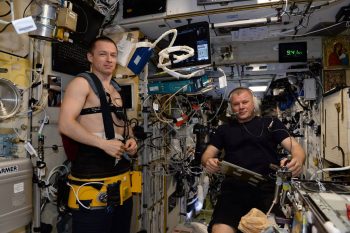
Sergei and Oleg during a Fluid Shifts experiment. Credit: ESA/NASA
Let’s have a look at what research Thomas has been doing since our last overview starting with the record-breaking week of 6 March. That week saw the last measurements done on the Energy experiment and Thomas working with Sergei a lot on the Fluid Shifts experiment, this research is looking at how astronaut’s bodies change in weightlessness, getting ready for longer missions further away from home. Thomas also setup cameras to record the launch of some miniature satellites from the Space Station.
Thomas worked many hours on the Auxin transport experiment for Japan’s space agency JAXA – a study into how plants transport nutrients to grow – in space and on Earth. In between Thomas worked on the EveryWear app that was showing connection troubles (yes even in space!) and fixed the issue to regain connection with the application. More Fluid Shifts and Energy work as well as spacewalk preparation in the afternoon continued into Thursday coupled with unloading Dragon using up Thomas’ time until the end of the week.
This week the constraints of Dragon had Peggy, Shane and Thomas working all through Saturday and Sunday on Auxin Transport for Thomas and Rodent Research for Peggy and Shane.
The week of 10 March continued strong with Thomas spending the whole day in the Japanese Kibo lab working on its external facilities using the small robotic arm as well as saving the data from his Energy armband that had been recording his activity for 11 days. The next day was water day where he collected samples from the Space Station’s water supply and tested it for contamination. He used both the standard technique as well as a new experimental technique called Aquapad designed by France’s space agency CNES. The water turned up bacteria-free and safe to drink.
The week of 17 March saw continuing work on Auxin transport, and Dragon leaving the Station on 19 March. As Thomas wrote on Facebook “She will take a part of us back to ground with her, and I mean that literally because she carries lots of important scientific samples, some of them obtained from the crew!”
A less urgent transport was a flash disk full of data from the SODI-DCMIX experiment. This research is looking at liquid mixtures in space to understand how they interact. Many liquids from milk to oil are suspensions of molecules and this European is understanding the physics behind how they stay in suspension – on Earth gravity interacts with the molecules and makes it harder to understand how they interact with each other.
The two spacewalks of March required many hours of preparation from the crew so aside from that work Thomas spent time inspecting the Space Station’s latest addition, the Bigelow Expandable Activity Module (BEAM) – an expandable module that promises quicker and better construction of future space stations, taking air samples, and rerouting cables after the relocation of the Pressurised Mating Adapter.
Throughout Thomas’ work he was wearing and recording radiation levels with ESA’s active dosimeter experiment – the first in-depth investigation into how much radiation astronauts receive at all times during a stay in space. Thomas wears a belt that records radiation and downloads the data at regular intervals to Earth.
More European research
The Space Station is a collaboration between USA, Russia, Japan, Canada and ESA, so listing research activities by space agency or astronaut shows only a small part of the story. Many European experiments are run by non-ESA astronauts and Thomas works on many experiments from all over the world as detailed above and some experiments run automatically without much input from astronauts.
Other notable experiments that ran in the last month include looking at how metals are cast on an atomic level to create stronger, lighter and better alloys. The Metcomp-1 batch melted copper-silicon alloys while the Seta-2 experiment looked at Aluminium-copper alloys. Of particular interest in these experiments is ‘eutectic growth’ when casting metals when metal ions solidify at the lowest possible temperature.
Meanwhile Magvector is investigating how Earth’s magnetic field interacts with an electrical conductor. Using extremely sensitive magnetic sensors placed around and above a conductor on the International Space Station researchers will gain insight into how the magnetic field influences how conductors work.
This research could not only help improve future Space Station experiments and electrical experiments but could also offer insights into how magnetic fields influence electrical conductor in general – the backbone of our technology.
Shane continued taking part in the Space Headaches experiment that is charting astronaut headaches throughout their mission by filling in regular questionnaires. Headaches are common complaints of astronauts as they acclimatise to an environment humans have never lived in.
Lastly an upgrade of the Astro Pi educational computers based on the Raspberry Pi was ran to improve its operating system and allow it to be operated from ground control – in space too keeping your computer up to date is important!

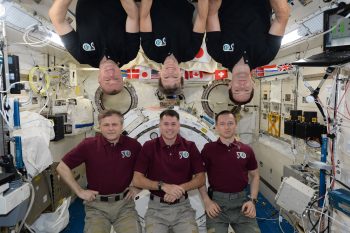
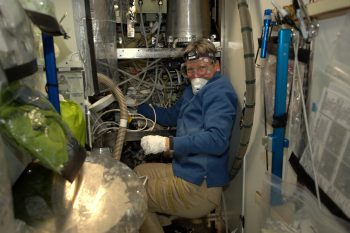
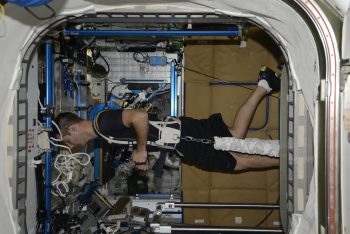
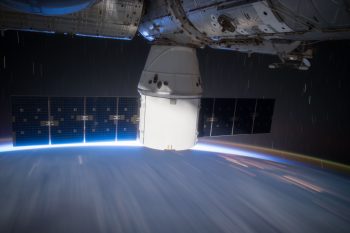
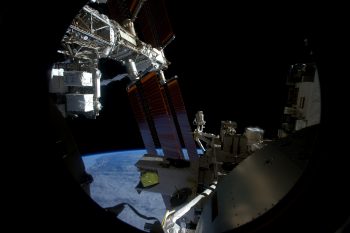
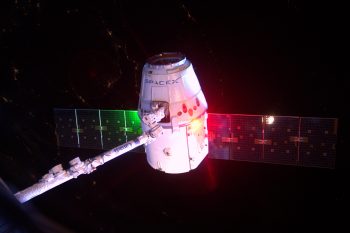
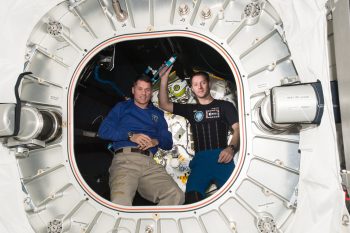

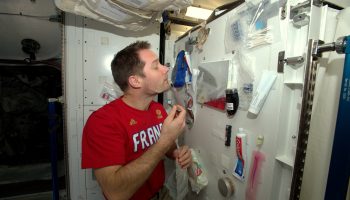


Discussion: 8 comments
UN LIVRE GRAND FORMAT OU UN COFFRET DE COLLECTION RICHE EN DONNÉS ET INFORMATIONS SCIENTIFIQUES AVEC DES EXEMPLES DÉTAILLÉS (INFORMATIONS AU LARGE PUBLIC +UN PETIT CLIN D’OEIL SUR DES DONNÉES STRATÉGIQUE ),SERA LE BIEN VENU DE THOMAS ET SES COLLÈGUES EN PLUS UN DOCUMENTAIRE RETRAÇANT TOUT LE PARCOURS.
Beaucoup de travail sur Terre et dans l’espace, merci de nous eclairer..
Beaucoup de travail sur Terre et dans l’espace, merci de nous eclairer..on ne se rend pas compte de tout le travail que cela demande
Beautiful story. Congratulations on the new science record. It’s obvious, that science projects in space are very important too. Not only more tests will be done on earth by researchers, but perhaps one day an important cure will be found.
bravo Thomas et à toute votre équipe . quel beau travail que vous accomplissez ,bravo pour ce record ! votre mission Proxima est vraiment noble et fait progresser la science pour l’humanité. Merci aussi de nous accorder le temps qui vous reste après votre travail pour partager avec nous vos merveilleuses photos .
Bonsoir,avez vous vu des lumières étranges autour de la terre ?je me posé la question si vous aller un jour approcher l’iss vers mars ?et ne pensez vous pas que des humanoides pourraient travailler avec vous ?
Hello
Bonjour de lille et merci de nous faire partager vos expériences
Bonjour Thomas Pesquet je vous admire beaucoup. Moi je suis fane de l espace. J aimerais travailler pour les fuser.